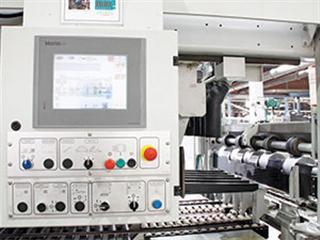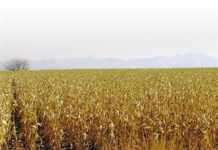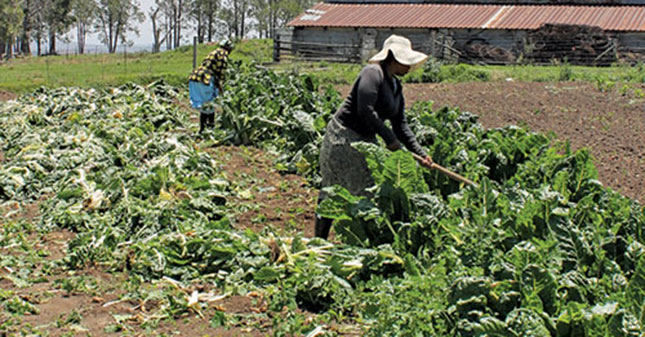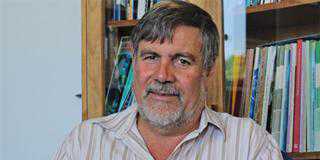
Agriculture’s energy demand is far less than many industries. Why, then, is it so important for Eskom to get the sector energy efficient?
Agriculture is important because of food security. Even if we can get all the other sectors 100% energy efficient, if there’s no food on the table that doesn’t help us. Currently, energy usage – or demand – for the primary sector, meaning on farms, is 4% of Eskom’s total production, which is very small. But we don’t look at the 4%, we look at the importance of the sector.
Hence our campaign to get farmers to be more energy efficient through the Standard Product and Standard Offer programmes.
What is the Standard Product Programme?
The Standard Product Programme is designed to provide specific rebates for efficiency improvements derived from the implementation of approved technologies. These include solar water heaters, heat pumps and energy efficient lighting.
The Standard Product Programme covers game farms and primary and secondary agricultural activities, as lighting and water-heating form part of both of these operations. The Standard Product Programme is designed for smaller savings – that is, from 1kW up to 250kW.
If, for example, you replace a ‘normal’ 60W bulb with an 11W CFL, then you’ll have to replace at least 25 of the normal bulbs (1 500W) to be able to save 1kW. The saving per kilowatt hour is related to a monetary value, and an agreement reached on what Eskom will contribute to the project based on the savings. This is a pre-approved fund, so the process can be concluded fairly quickly, in a matter of two to three weeks.

Pannetjie Roussouw
Can farmers use any product they want to?
No, only technologies that have been approved by Eskom will be considered as ‘Standard Products’. Eskom’s Integrated Demand Management team has compiled a database of application-specific Standard Products deemed to be energy-efficient technologies, and which can be implemented by customers in order to receive an agreed-upon rebate from the electricity supplier.
Customers must also ensure that the new installation and technology conform to all applicable laws, specifications and regulations. Any deviation from Standard Product specifications will be for the customer’s account. The Standard Product list will continue to grow as ‘new’ technologies are identified and approved for inclusion. Furthermore, all the projects must go through the Eskom approval process and, thereafter, farmers can’t do any alterations or modifications without first getting Eskom’s approval.
What is the Standard Offer Programme?
The Standard Offer Programme is designed to provide significant financial incentives to companies which reduce electricity demand through the introduction of appropriate and approved energy-efficient technologies. It’s based on much larger energy savings than the Standard Product Programme – that is, of between 50kW and 5MW. The incentive ranges from 42c to 55c per kilowatt hour saved. The average charge per kW/hour is about 82c. In effect you’re getting up to R1,22 per kW/hour that you can spend reducing your consumption.
The Standard Offer Programme only applies to savings from Monday to Friday, from 5am to 10pm. There’s also a small-scale renewable energy generation incentive. This is where we encourage farmers to go for renewable energy. They can put up plants for generating electricity for their own usage. For this we pay about R1,20 per kW/hour used. The plants should not be smaller than 10kW or bigger than 1MW – if you go above this you need an energy generation licence along with many other requirements.
Who qualifies for these programmes?
Any farmer would qualify. Anyone who wants to apply for the programmes can go to Eskom’s website to get information and application forms. You’ll also find a ‘toolkit’ you can complete yourself or take to your local energy advisor for assistance. From there you can do an audit and, based on the results, continue with the application process. Once you have Eskom’s approval you can start implementing the programme.
How long has Eskom been running these programmes?
The programmes have been running for about two years now. But they’ve only been aggressively marketed since 2012.
Has there been a significant buy-in from the farming community?
We haven’t seen a huge buy-in from the farming sector. Most buy-in to date has been from the industrial sector. Having said that, I must add that we’re also seeing a change in attitude towards energy saving. For example, we organised a farmers’ day in KwaZulu-Natal recently and, judging by the number of farmers who attended, it’s quite obvious farmers are now aware of the programmes and keen to start saving. But, ultimately, for farmers to start buying-in on these programmes, they need to see one farmer in the area taking the lead. As soon as one guy’s taken the step I believe the rest will follow.
Why hasn’t there been a huge uptake of these programmes?
To my mind there could be a couple of reasons. One is that, for someone to go and replace the lights on a farm, the distance they must cover is quite long. And so I believe, initially at least, the savings are seen as too small to justify the cost of implementing the programme.I also think that what has been happening in the farming sector – the labour unrest and ongoing uncertainty over land reform – has made farmers very reluctant to invest in their farms.
How do you make sure that information reaches farmers?
We attend as many farmers’ days as we can. We also participate in a lot of farmer union meetings. In addition, we organise our own farmers’ days. In short, we try to participate where we can and carry the message out there to farmers.
In your opinion, what farming activities eat up the most energy and so need to be urgently looked at?
Irrigation is one of the biggest energy-demanding activities on the farm. If you do irrigation you need to pump and most of the pumps are electric – although, of course, there are some that run on diesel. A lot of people are over-irrigating and farmers are also using systems which are incorrectly designed. This is not their fault. It’s just that when farmers moved from the old ways of farming and started farming intensively, electricity costs were so low.
As a result these were not a determining factor in the designing of these technologies. Now, however, we have a situation where the current cost of electricity is very high and becomes a larger part of a farmer’s operational costs. The second biggest energy-demanding farming activity, I believe, is animal husbandry. Large poultry houses and piggeries, for example, require a lot of energy.
Farms are normally situated in rural areas – is it not going to be a challenge for farmers to get hold of you with regards to implementing these programmes?
We have countrywide support. Our advisory teams are located across the country, to provide industrial, commercial, agricultural and residential customers, large and small, with close and easy access to energy advisory services.
Farmers wishing to locate their closest regional energy advisor can visit the Integrated Demand Management website at www.eskom.co.za. Alternatively, they can call the Eskom Customer Contact Centre on 086 003 7566.













